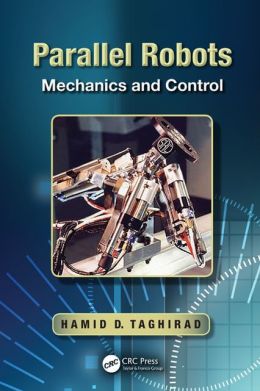 [内容简介]
[内容简介]
Parallel structures are more effective than serial ones for industrial automation applications that require high precision and stiffness, or a high load capacity relative to robot weight. Although many industrial applications have adopted parallel structures for their design, few textbooks introduce the analysis of such robots in terms of dynamics and control. Filling this gap, Parallel Robots: Mechanics and Control presents a systematic approach to analyze the kinematics, dynamics, and control of parallel robots. It brings together analysis and design tools for engineers and researchers who want to design and implement parallel structures in industry.
Covers Kinematics, Dynamics, and Control in One Volume
The book begins with the representation of motion of robots and the kinematic analysis of parallel manipulators. Moving beyond static positioning, it then examines a systematic approach to performing Jacobian analysis. A special feature of the book is its detailed coverage of the dynamics and control of parallel manipulators. The text examines dynamic analysis using the Newton-Euler method, the principle of virtual work, and the Lagrange formulations. Finally, the book elaborates on the control of parallel robots, considering both motion and force control. It introduces various model-free and model-based controllers and develops robust and adaptive control schemes. It also addresses redundancy resolution schemes in detail.
Analysis and Design Tools to Help You Create Parallel Robots
In each chapter, the author revisits the same case studies to show how the techniques may be applied. The case studies include a planar cable-driven parallel robot, part of a promising new generation of parallel structures that will allow for larger workspaces. The MATLAB® code used for analysis and simulation is available online. Combining the analysis of kinematics and dynamics with methods of designing controllers, this text offers a holistic introduction for anyone interested in designing and implementing parallel robots.
[目录]
Introduction
What Is a Robot?
Robot Components
Robot Degrees-of-Freedom
Robot Classification
The Aims and Scope of This Book
Motion Representation
Spatial Motion Representation
Motion of a Rigid Body
Homogeneous Transformations
Problems
Kinematics
Introduction
Loop Closure Method
Kinematic Analysis of a Planar Manipulator
Kinematic Analysis of Shoulder Manipulator
Kinematic Analysis of Stewart–Gough Platform
Problems
Jacobians: Velocities and Static Forces
Introduction
Angular and Linear Velocities
Jacobian Matrices of a Parallel Manipulator
Velocity Loop Closure
Singularity Analysis of Parallel Manipulators
Jacobian Analysis of a Planar Manipulator
Jacobian Analysis of Shoulder Manipulator
Jacobian Analysis of the Stewart–Gough Platform
Static Forces in Parallel Manipulators
Stiffness Analysis of Parallel Manipulators
Problems
Dynamics
Introduction
Dynamics of Rigid Bodies: A Review
Newton–Euler Formulation
Virtual Work Formulation
Lagrange Formulation
Problems
Motion Control
Introduction
Controller Topology
Motion Control in Task Space
Robust and Adaptive Control
Motion Control in Joint Space
Summary of Motion Control Techniques
Redundancy Resolution
Motion Control of a Planar Manipulator
Motion Control of the Stewart–Gough Platform
Problems
Force Control
Introduction
Controller Topology
Stiffness Control
Direct Force Control
Impedance Control
Problems
Appendix: Linear Algebra
Vectors and Matrices
Vector and Matrix Operations
Eigenvalues and Singular Values
Pseudo-Inverse
Kronecker Product
Appendix: Trajectory Planning
Point-to-Point Motion
Specified Path with Via Points
Appendix: Nonlinear Control Review
Dynamical Systems
Stability Definitions
Lyapunov Stability
Krasovskii–Lasalle Theorem
References
Index

 新书报道
新书报道